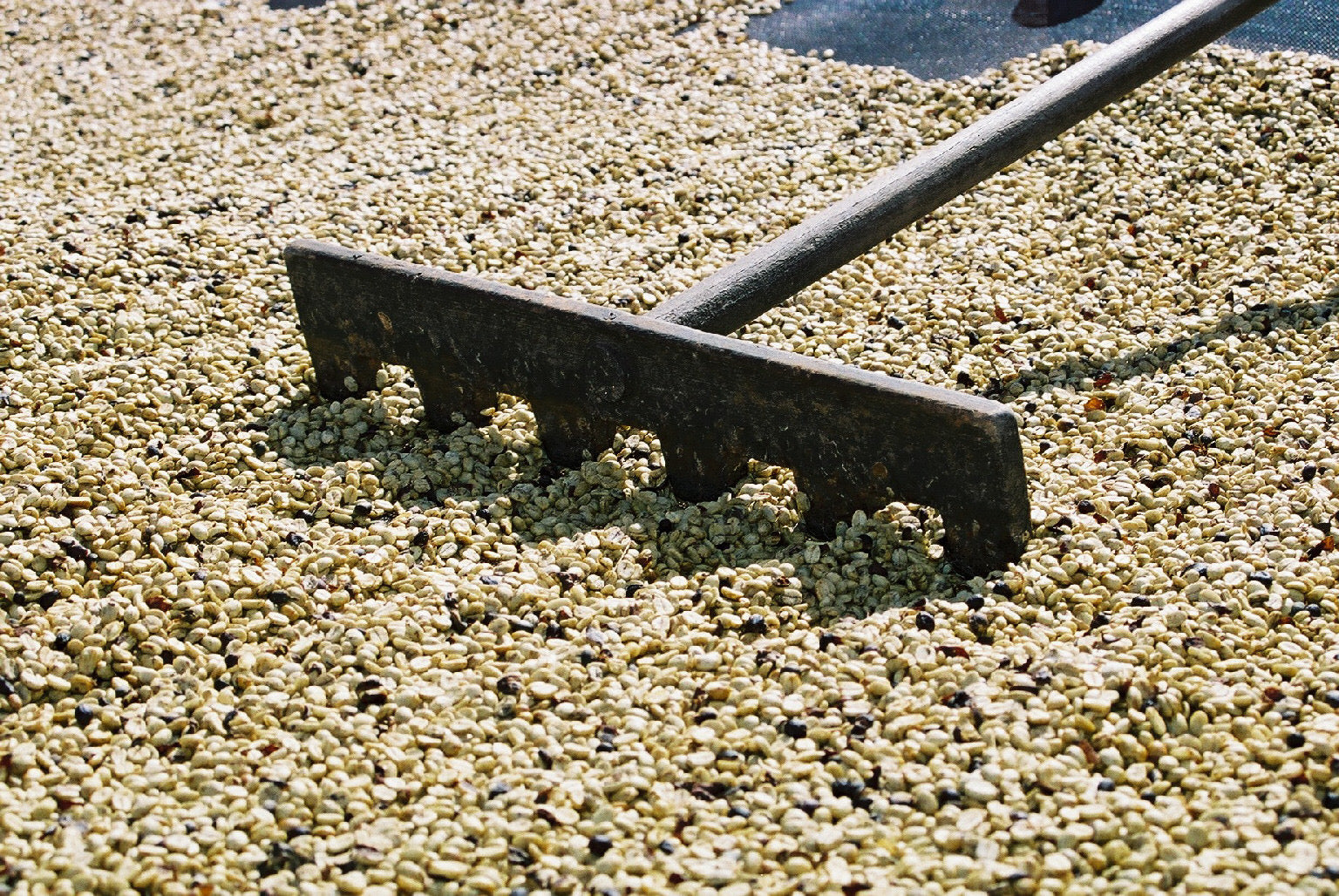Written by Carlos Bertin
During my 20 years of professional cooking, I rarely encountered an ingredient so versatile and full of possibilities as green coffee can be. To be fair, grapes and cocoa beans are also part of this very select club. This little green seed is so full of possibilities, that in the end one cannot help but fall in love with it.
The difficulty in understanding coffee’s flavour is the complexity of its molecular chemistry, as more than 1,200 different chemical compounds blend together to create coffee’s aroma, taste, and mouthfeel as we know it.
To start getting the hang of coffee roasting, we have to understand the relationship between temperature, time and air flow. This journey takes the green coffee seed, which has almost no flavour beyond a quite unpleasant vegetal and bitter taste, and transforms it into an incredibly aromatic, astonishingly complex coffee bean.
The roasting process can be controlled to determine three aspects of how the coffee will taste: acidity, sweetness and bitterness. It is generally agreed that the longer a coffee is roasted, the less acidity it will have in the end. Conversely, bitterness will slowly increase the longer a coffee is roasted. Have you ever cooked sugar to make caramel at home? Longer the cooking, the more bitter the sugar will be. This is what we call caramelization and the same occurs when roasting coffee.
There are a number of key stages during roasting and depending on how fast a particular coffee passes through each of these stages is referred to as its roast profile (a.k.a - recipe). To avoid getting too nerdy and technical, let’s divide a roast into the following 3 roasting stages:
1) Drying: Green coffee contains 7-11% water by weight. Coffee will not turn brown in the presence of water, and in fact this is true of browning reactions (a.k.a Maillard) when cooking anything. There are no real significant chemical reactions happening during the drying phase, rather, water vapour is being driven off, pressure is beginning to build and the thermal momentum of the batch is being established. This drying phase begins at the moment the beans go inside the roasting chamber and ends at the critical point noted as the beginning of chemical reaction. This point is noted as the beginning of the colour change to yellow (~320F-340F). This signals the beginning of the next roasting phase - Maillard reaction.
2) Maillard: This chemical reaction is likely responsible for well 600 volatile organic compounds within the finished product. It begins early in the roast as amino acids act as catalysts with reducing sugars, resulting in a complex sugar browning process. Increasing the amount of time that the Maillard reaction takes to complete you increases the complexity of the sugar browning tones you are creating. This phase will transition to the next, the development phase, when you can tell that the bulk of the coffee in the roaster is beginning to enter First Crack (~380F-400F). First Crack is simply when the internal pressure causes the bean to split open and crack. (Making a sound like pop corn popping)
3) Development: After First Crack, the beans will be much smoother on the surface. This stage of the roast determines the end colour of the beans and the roast degree. It is at this phase that we can determine the balance of acidity and bitterness in the end product as the acids in the beans are rapidly degrading while the level of bitterness is increasing as the roast continues. A lite roast will have a shorter development time and a darker roast a longer one.
This is the tip of the iceberg of coffee roasting. If you would like to read more, below are some references that offer very rich information on the subject. And if you are interested in learning hands on, please visit our sister company: www.mundonovoroasters.com and get in touch with us.
Selected References:
Hoos, Rob - Modulating the Flavour Profile of Coffee - 2015
Hoffman, James - The World Atlas of Coffee - 2014
McGee, Harold - On Food and Cooking - The Science and Lore of the Kitchen - 2004
Rao, Scott - The Coffee Roaster’s Companion - 2014
Specialty Coffee Association (SCA) - Coffee Sensory and Cupping Handbook - 2021


